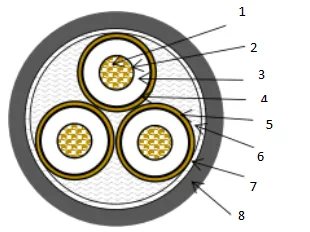11 月 . 04, 2024 03:41 Back to list
actuated ball valve
Understanding Actuated Ball Valves Functionality and Applications
Actuated ball valves are essential components in modern industrial processes, facilitating the efficient control of fluid flow in various applications. These valves combine the simple yet effective design of ball valves with the precision and automation provided by actuators. This integration enhances their functionality, making them a preferred choice for many engineering applications ranging from water treatment to oil and gas industries.
The Design of Actuated Ball Valves
At the core of an actuated ball valve is the ball itself, which is a spherical disk that rotates to open or close the valve. The ball features a bore that allows fluid to pass through when aligned with the pipeline. When the valve is closed, the ball turns 90 degrees to block the flow. This straightforward mechanism ensures tight sealing and minimal leakage, making ball valves reliable for high-pressure applications.
The actuation mechanism can vary, primarily utilizing electric, pneumatic, or hydraulic actuators. Electric actuators are widely favored for their precision and ease of integration with control systems. Pneumatic actuators, on the other hand, are valued for their rapid operation, making them suitable for emergency shutoff scenarios. Hydraulic actuators, while less common, provide significant force, making them ideal for larger valves in heavy-duty applications.
Advantages of Actuated Ball Valves
actuated ball valve

One of the main benefits of actuated ball valves is their speed of operation. Compared to manual valves, actuated versions can significantly reduce the time required to open or close valves, optimizing operational efficiency. Additionally, they can be remotely operated, allowing for enhanced safety and convenience, especially in hazardous environments.
Moreover, actuated ball valves are highly versatile and can be adapted to a variety of systems, including automation frameworks that require precise control over fluid dynamics. Their compatibility with sensors and control systems ensures that they can provide real-time feedback and adjustments, further enhancing system efficiency.
Applications in Industry
Actuated ball valves find applications across diverse sectors. In the water and wastewater industry, they ensure efficient flow control and are essential for managing systems such as irrigation and treatment plants. In the oil and gas sector, they facilitate the control of fluids in pipelines while maintaining integrity under high-pressure conditions. Moreover, industries like pharmaceuticals and food processing benefit from their capability to maintain hygiene standards and prevent contamination, thanks to their smooth surfaces and tight sealing.
Conclusion
In summary, actuated ball valves represent a critical advancement in valve technology, merging the reliable operation of traditional ball valves with the benefits of automated control systems. Their ability to provide swift, precise control in a variety of industrial applications makes them an integral part of modern processing systems. As industries continue to evolve and seek better efficiency, the role of actuated ball valves is expected to grow, solidifying their place as a cornerstone of fluid dynamics management.
Share
-
Understanding the Differences Between Wafer Type Butterfly Valve and Lugged Butterfly ValveNewsOct.25,2024
-
The Efficiency of Wafer Type Butterfly Valve and Lugged Butterfly ValveNewsOct.25,2024
-
The Ultimate Guide to Industrial Swing Check Valve: Performance, Installation, and MaintenanceNewsOct.25,2024
-
Superior Performance with Industrial Swing Check Valve: The Essential Valve for Any SystemNewsOct.25,2024
-
Industrial Swing Check Valve: The Ideal Solution for Flow ControlNewsOct.25,2024
-
You Need to Know About Industrial Swing Check Valve: Functionality, Scope, and PerformanceNewsOct.25,2024